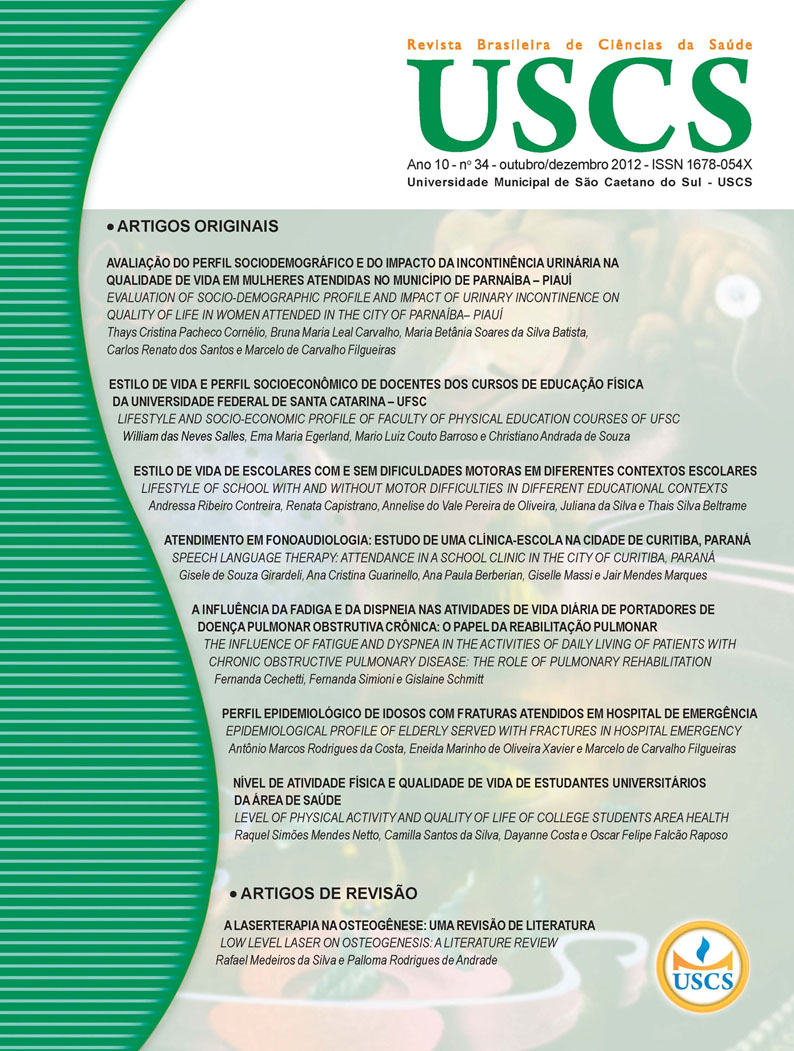PERFIL EPIDEMIOLÓGICO DE IDOSOS COM FRATURAS ATENDIDOS EM HOSPITAL DE EMERGÊNCIA
DOI:
https://doi.org/10.13037/rbcs.vol10n34.1797Keywords:
FisioterapiaAbstract
INTRODUÇÃO: Fraturas em idoso constituem importante causa de adoecimento, sendo um problema de saúde pública. OBJETIVOS: O estudo teve como objetivo analisar perfil epidemiológico de idosos em relação a fraturas atendidos em Parnaíba-PI. MÉTODOS: Tratou-se de um estudo epidemiológico, descritivo e retrospectivo com coleta de dados de base documental. A população foi composta por 92 pacientes acima de 60 anos vítimas de fraturas. RESULTADOS: Verificou-se que, 35,9% eram homens, 64,1% mulheres, maioria na faixa etária entre 60 e 70 anos de idade. Observou-se que 18,4% apresentaram fratura exposta e 81,6% fechada. O rádio foi o local mais acometido pela fratura, 37,5%. Com relação à causa da lesão, constatou-se que 82,6% sofreram fratura por queda e 17,4% foram vítimas de acidente de trânsito. CONCLUSÕES: A fratura em idosos é um problema de saúde pública, causando hospitalizações nesta população exigindo ações preventivas.Downloads
Downloads
Published
2013-03-27
Issue
Section
ARTIGOS ORIGINAIS
License
Policy Proposal for Journals offering Free Delayed Access
Authors who publish in this magazine agree to the following terms:
- Authors maintain the copyright and grant the journal the right to the first publication, with the work simultaneously licensed under a Creative Commons Attribution License after publication, allowing the sharing of the work with recognition of the authorship of the work and initial publication in this journal.
- Authors are authorized to assume additional contracts separately, for non-exclusive distribution of the version of the work published in this magazine (eg, publishing in institutional repository or as a book chapter), with the acknowledgment of the authorship and initial publication in this journal.
- Authors are allowed and encouraged to publish and distribute their work online (eg in institutional repositories or on their personal page) at any point before or during the editorial process, as this can generate productive changes, as well as increase impact and citation of the published work (See The Effect of Open Access).









